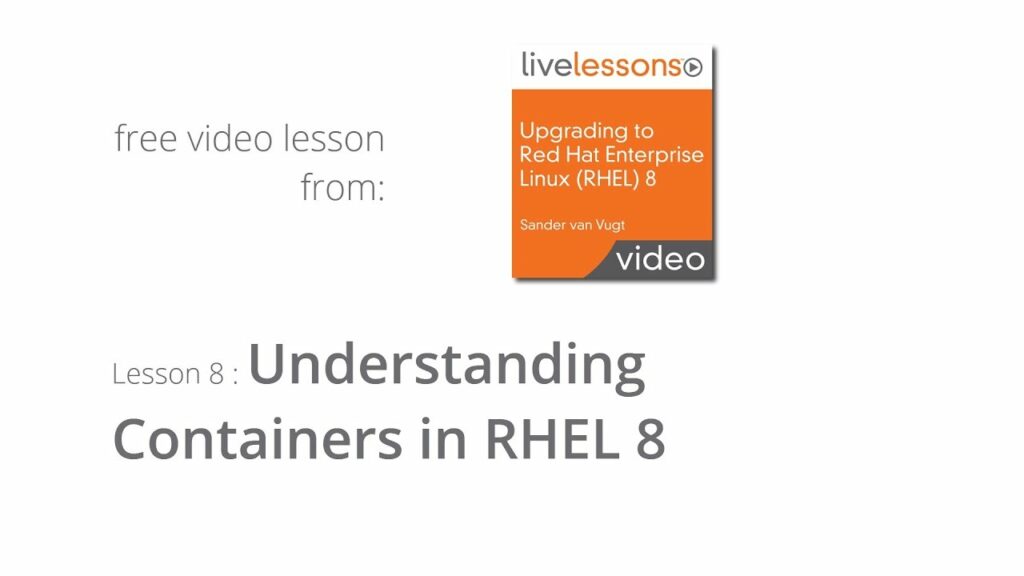Windows users can install Podman on WSL2, but for MacBook users (like myself) Podman is shipped together with an integrated Linux VM (Podman machine) for free.
Similarly, Is CoreOS Linux?
CoreOS Linux (renamed CoreOS Container Linux) was an open source, lightweight Linux operating system geared specifically for providing the necessary infrastructure for clustered deployments.
Is Podman replacing Docker? In this blog post I will share my experience replacing docker with podman on my computer. Podman is a daemonless container engine for developing, managing, and running OCI Containers on your Linux System. Containers can either be run as root or in rootless mode. Simply put: alias docker=podman.
Thereof, Can Podman replace Docker?
Migrating from Docker to Podman
You need to install Podman instead of Docker. You do not need to start or manage a daemon process like the Docker daemon. The commands that you use with Docker will be the same for Podman. Images of Docker is compatible with Podman.
Can Kubernetes use Podman?
The podman generate kube command allows you to export your existing containers into Kubernetes Pod YAML. This YAML can then be imported into OpenShift or a Kubernetes cluster. The podman play kube does the opposite, it allows you to take a Kubernetes YAML and run it in Podman.
Is CoreOS dead?
On May 26, 2020, CoreOS Container Linux reached its end of life and will no longer receive updates.
What is the difference between CoreOS and RHEL?
CoreOS and Red Hat Enterprise Linux can be primarily classified as « Operating Systems » tools. SoFi, Astronomer, and Instamojo are some of the popular companies that use CoreOS, whereas Red Hat Enterprise Linux is used by Kanteron Systems, Voices.com, and Ericsson.
What is photon Linux?
Photon OS is a Linux container host optimized for vSphere and cloud-computing platforms such as Amazon Elastic Compute and Google Compute Engine. As a lightweight and extensible operating system, Photon OS works with the most common container formats, including Docker, Rocket, and Garden.
Is Docker Linux still free?
Docker Desktop remains free for small businesses (fewer than 250 employees AND less than $10 million in annual revenue), personal use, education, and non-commercial open source projects.
Can I use containerd without Docker?
Kaniko helps you build container images within a container without any access to the Docker daemon. That way, you can execute your build jobs within containers without granting any access to the host filesystem.
How do I run without Docker?
Right now I think it’s:
- build a container image. …
- run that container with rkt. …
- run the container in your host network namespace (same place as before) so you don’t need to worry about any fancy networking business.
- supervise it the same way you supervise things currently.
- run the container in its own pid namespace.
Can you use containers without Docker?
There’s no way for it to silently depend on the host configuration, because its filesystem is totally separate from the host’s filesystem. To get these advantages, you don’t need to run Docker or Kubernetes or Mesos or anything! You just need to have a container that is isolated from the rest of your operating system.
Can Kubernetes run without Docker?
Can Kubernetes Run Without Docker? The answer is both yes and no. Kubernetes, in itself, is not a complete solution. It depends on a container runtime to orchestrate; you can’t manage containers without having containers in the first place.
Can I run Docker compose in Kubernetes?
Today we’re happy to announce we’re open sourcing our support for using Docker Compose on Kubernetes. We’ve had this capability in Docker Enterprise for a little while but as of today you will be able to use this on any Kubernetes cluster you choose.
What is Cgroup driver?
Cgroup drivers
Control groups are used to constrain resources that are allocated to processes. When systemd is chosen as the init system for a Linux distribution, the init process generates and consumes a root control group ( cgroup ) and acts as a cgroup manager.
What is CRI O?
CRI-O is an implementation of the Kubernetes CRI (Container Runtime Interface) to enable using OCI (Open Container Initiative) compatible runtimes. It is a lightweight alternative to using Docker as the runtime for kubernetes.
How is CoreOS immutable?
Fedora CoreOS is designed to be managed as immutable infrastructure. After a machine is provisioned, you should not modify /etc or otherwise reconfigure the machine. Instead, modify the FCC and use it to provision a replacement machine.
Who bought CoreOS?
Red Hat announced that it is acquiring CoreOS, a San Francisco-based startup, for $250 million. In what is considered to be one of the largest acquisitions made by Red Hat, this deal further consolidates the position of the company in the open source market.
What are the main components in Openshift architecture?
OpenShift includes everything you need for hybrid cloud, like a container runtime, networking, monitoring, container registry, authentication, and authorization.
What is Rhcos?
Red Hat Enterprise Linux CoreOS (RHCOS) represents the next generation of single-purpose container operating system technology by providing the quality standards of Red Hat Enterprise Linux (RHEL) with automated, remote upgrade features.
How do you run Openshift?
Join TheMoney.co community and don’t forget to share this post !
